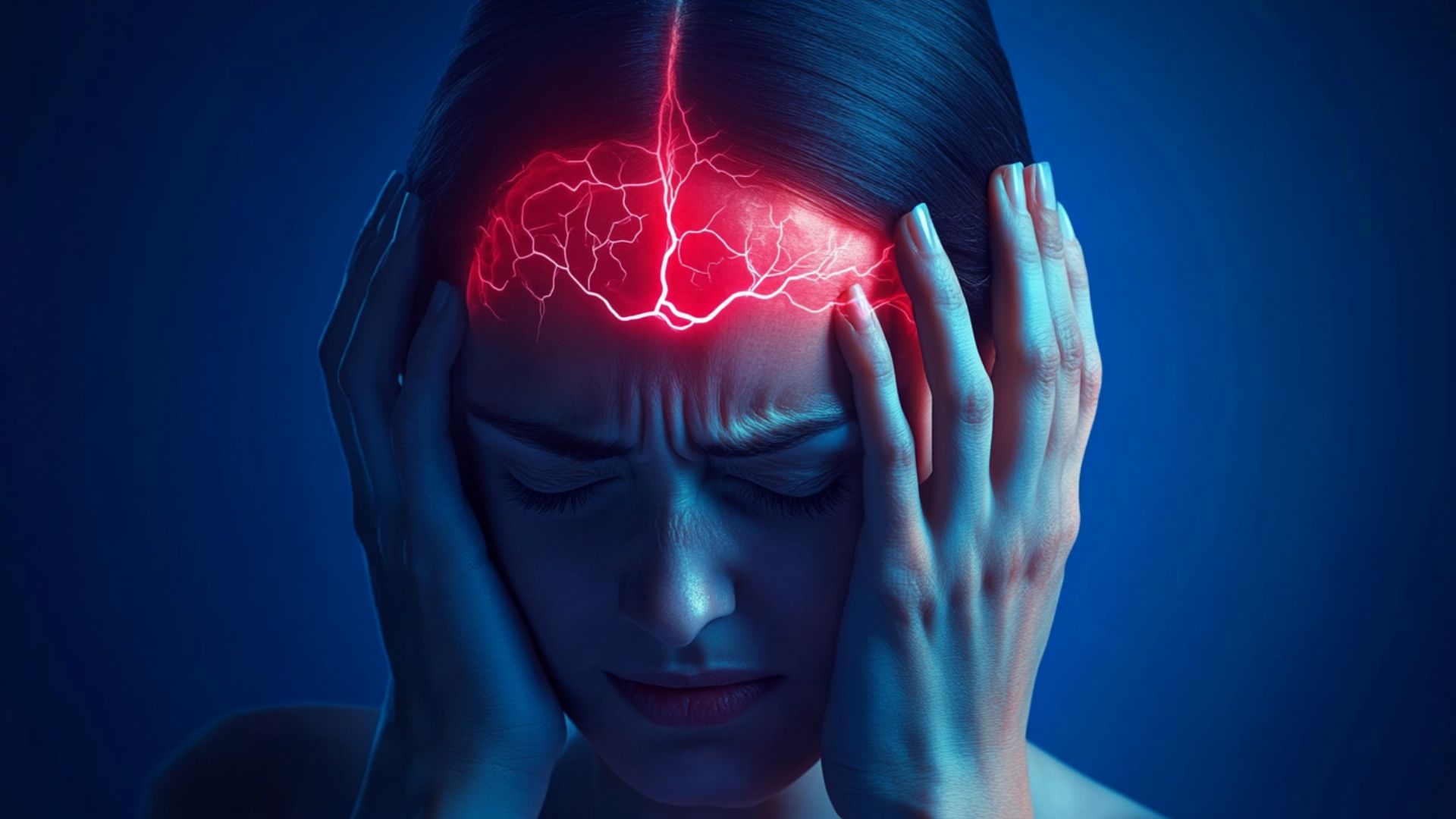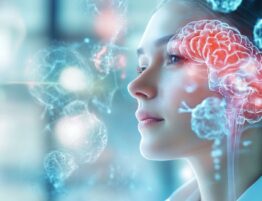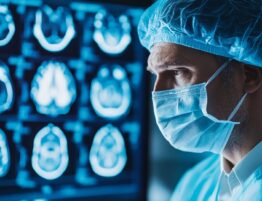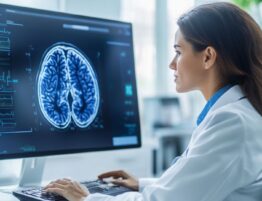Many patients struggle to differentiate between migraines and tension headaches due to their overlapping symptoms. Both conditions cause head pain, which can lead to confusion and misdiagnosis, ultimately delaying effective treatment and impacting quality of life. Understanding the key differences between these two headache types is essential for proper treatment.
Migraines typically involve throbbing pain, usually concentrated on one side of the head, often accompanied by nausea, visual disturbances, and sensitivity to light or sound. Tension headaches feel like a tight band wrapped around the head, causing steady, dull pain on both sides. These are commonly triggered by stress or muscle tension and don’t produce the severe accompanying symptoms of migraines.
Patients often assume all headaches are similar, leading to incorrect self-treatment. Proper diagnosis by a neurologist clarifies your specific headache type and guides an effective treatment plan. Migraines typically require specific medications like triptans, while tension headaches often respond to stress management and over-the-counter pain relievers. Accurate diagnosis prevents complications and reduces future episodes.
Lone Star Neurology offers comprehensive evaluations to identify underlying causes, ensuring safe and effective treatment tailored to your needs.
Understanding the Main Differences Between Migraines and Tension Headaches
Distinguishing between migraine and tension headache symptoms is crucial for proper diagnosis and treatment. While both cause head pain, their characteristics differ significantly.
Migraines involve intense, throbbing pain often concentrated on one side of the head. A patient might experience pulsing pain in the temple that worsens with light exposure, along with nausea and heightened sensitivity to noise. Migraines typically last between 4 and 72 hours and often include aura (visual disturbances like flashing lights) or vomiting.
Tension headaches feel like a tight band wrapped around the head with a dull, steady ache across the forehead. The pain affects both sides and typically lasts from 30 minutes to 7 days, often resolving with rest or mild pain relievers. Unlike migraines, they don’t cause nausea or severe sensory sensitivity.
| Feature | Migraine | Tension Headache |
| Pain Type | Throbbing and pulsing | Dull, tight band-like sensation |
| Location | One side (e.g., temple) | Both sides (e.g., across forehead) |
| Intensity | Moderate to severe | Mild to moderate |
| Duration | 4–72 hours | 30 minutes–7 days |
| Associated Symptoms | Nausea, light/noise sensitivity, aura | Typically none; mild discomfort only |
| Common Triggers | Hormones, bright lights, certain foods | Stress, poor posture, muscle tension |
Accurate diagnosis guides appropriate treatment — migraines may require triptans, while tension headaches respond to ibuprofen or stress-relief techniques. Consult Lone Star Neurology at 214-619-1910 for expert evaluation and personalized care.
Recognizing Migraine Symptoms and Triggers
Migraines are intense headaches with distinct characteristics. Recognizing these signs helps identify triggers and seek appropriate treatment early.
Common migraine triggers include stress, hormonal changes, and certain foods or beverages. Bright lights, loud noises, strong smells, lack of sleep, dehydration, weather changes, and skipping meals can also provoke attacks.
Migraine pain is characteristically throbbing or pulsing, usually affecting one side of the head. The intensity ranges from moderate to severe and worsens with physical activity, making daily activities nearly impossible during an attack.
Neurological symptoms are a hallmark of migraines. Some patients experience aura — visual disturbances like flashing lights or zigzag lines — typically occurring before pain begins. Other common symptoms include nausea, vomiting, and extreme sensitivity to light and sound. Some also experience dizziness or tingling sensations.
Key migraine symptoms:
- Throbbing pain: Pulsing sensation, typically one-sided
- Aura: Visual disturbances like flashing lights
- Nausea and vomiting: Feeling sick or actually vomiting
- Sound sensitivity: Loud noises worsen symptoms
- Dizziness: Feeling unsteady or spinning sensations
- Light sensitivity: Bright lights intensify pain
- Tingling: Unusual sensations in hands or face
- Fatigue: Extreme tiredness during or after an attack
- Blurred vision: Temporary visual changes
- Scalp tenderness: Pain when touching the head
Identifying symptoms and triggers early enables better management. Avoiding known triggers helps reduce attack frequency and severity. Lone Star Neurology offers expert diagnosis and personalized treatment plans. Tracking symptoms in a headache diary helps pinpoint triggers.
Understanding Tension Headache Symptoms and Causes
Tension headaches are the most common type and are typically linked to lifestyle factors and physical stress. Recognizing these symptoms helps distinguish them from migraines.
Primary causes include emotional stress, poor posture, and eye strain. Long hours at a computer may trigger headaches from poor posture and eye strain. Other triggers include jaw clenching, tight neck muscles, fatigue, dehydration, and prolonged sitting. Unlike migraines, tension headaches aren’t triggered by hormonal changes or bright lights.
Tension headaches produce a tight, band-like sensation around the head. The pain is dull and steady — not throbbing — and affects both sides. Tension headache symptoms are generally milder than migraines and rarely include nausea or significant light sensitivity.
Key tension headache symptoms:
- Band-like pain: Tight, squeezing sensation around the head
- Dull, steady ache: Non-pulsing, constant pain
- Bilateral pain: Affects both sides equally
- Scalp tenderness: Soreness when touching the scalp
- Neck stiffness: Tight muscles in the neck and shoulders
- Fatigue-related: Worsens with tiredness or stress
- Mild intensity: Less severe than migraines
- No nausea: Vomiting is extremely rare
- No aura: Lacks visual disturbances
- Stress-triggered: Linked to emotional or physical tension
Managing tension headache symptoms involves stress-reduction techniques, posture correction, regular screen breaks, and over-the-counter pain relievers. Physical therapy and relaxation exercises provide relief. Consult Lone Star Neurology at 214-619-1910 for expert evaluation. Tracking triggers helps with prevention and treatment planning.
Professional Diagnosis and Neurological Evaluation
Accurate headache diagnosis is essential for effective treatment. Lone Star Neurology neurologists use specialized methods to identify underlying causes and distinguish between primary and secondary headaches.
The process begins with a comprehensive patient history — detailed questions about pain characteristics, frequency, duration, and triggers. This is followed by a thorough physical and neurological examination assessing reflexes, coordination, and vision. When necessary, specific tests confirm or rule out serious conditions.
Key diagnostic steps:
- Patient history: Detailed discussion of symptoms and medical background
- Neurological exam: Tests balance, reflexes, and coordination
- Blood tests: Identify infections or inflammation
- CT scan: Detects bleeding or structural abnormalities
- MRI: Visualizes brain tissue for tumors or lesions
- Lumbar puncture: Analyzes spinal fluid for infections
- EEG: Monitors brain activity for seizures
- Eye examination: Checks for glaucoma or pressure issues
- X-rays: Evaluates skull or sinus problems
- Sleep study: Assesses sleep disorder contributions
Lone Star Neurology ensures safe, precise evaluations. After headache diagnosis, the team develops tailored treatment plans. Early diagnosis prevents complications and improves outcomes.
Effective Treatment Options and Prevention Strategies
Managing headaches requires appropriate treatments and preventive strategies. Consulting a neurologist ensures accurate diagnosis and effective care.
For migraines, prescription triptans abort attacks when taken early, while anti-nausea medications manage associated symptoms. Tension headaches respond to over-the-counter pain relievers like ibuprofen or acetaminophen. Secondary headaches require treating the underlying causes.
Lifestyle modifications reduce headache frequency. Stay hydrated, eat regular, balanced meals, and maintain consistent sleep schedules of 7–8 hours. Regular exercise reduces stress, while relaxation techniques like yoga or meditation help manage triggers. Identify and avoid personal triggers — certain foods, caffeine, alcohol, or bright lights.
Key strategies:
- Medications: Triptans for migraines; ibuprofen for tension headaches
- Hydration: Drink adequate water daily
- Sleep hygiene: Maintain consistent sleep times
- Regular meals: Keep blood sugar stable
- Exercise: Engage in regular physical activity
- Stress management: Practice meditation or deep breathing
- Trigger avoidance: Keep a headache diary
- Biofeedback: Consider for chronic management
- Specialist care: See a neurologist for persistent headaches
Consult a neurologist if headaches persist despite treatment, increase in frequency, or include neurological symptoms. Lone Star Neurology offers personalized treatment plans.
When to Seek Immediate Medical Help: Red Flag Symptoms
Certain warning signs require urgent attention. Recognizing red flags helps distinguish routine headaches from medical emergencies and can be lifesaving.
While typical migraines cause throbbing one-sided pain and tension headaches produce dull bilateral pain, specific symptoms indicate dangerous conditions like stroke, aneurysm, or meningitis.
Critical red flag symptoms:
- Thunderclap headache: Sudden, explosive pain — a medical emergency
- Vision changes: Sudden blurriness or vision loss
- Weakness: One-sided limb weakness or facial drooping
- Confusion: Difficulty thinking clearly or altered consciousness
- Fever with stiff neck: Suggests meningitis
- Severe vomiting: May indicate increased brain pressure
- Worsening pain: Rapidly intensifying despite treatment
- Post-trauma headache: Requires immediate evaluation
- New headache after 50: Raises concern for stroke or tumor
- Seizures: Indicates a neurological emergency
Lone Star Neurology maintains locations in Frisco, Garland, and San Antonio, offering same-day evaluations. Our neurologists utilize MRI imaging, CT scans, and comprehensive testing for rapid diagnosis.
Don’t ignore warning signs. If you experience red flag symptoms, call 911 or go to the nearest emergency room. For urgent concerns, contact Lone Star Neurology at 214-619-1910 for same-day appointments. Our specialists provide prompt evaluations and effective treatment plans for better health and quality of life.











Please, leave your review
Write a comment: